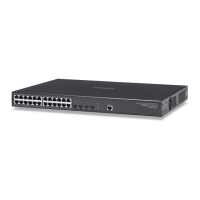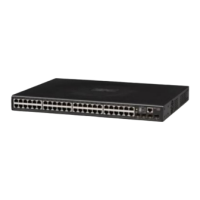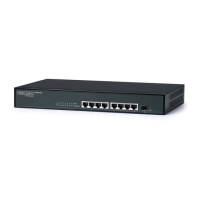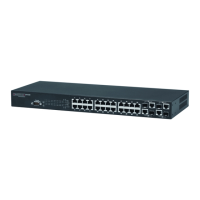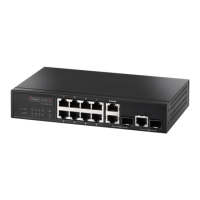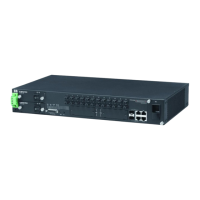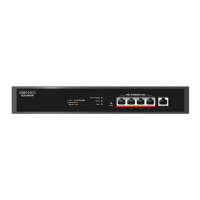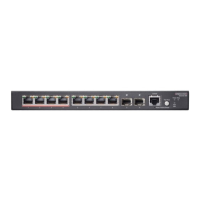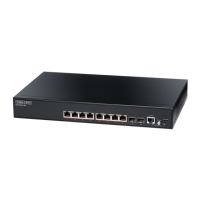C
HAPTER
4
| Configuring the Switch
Quality of Service
– 108 –
CONFIGURING PORT-
LEVEL QUEUE
SETTINGS
You can specify the default port priority for each port on the switch, a
Quality Control List (which sets the priority for ingress packets based on
detailed criteria), the default tag assigned to egress packets, the queuing
mode, and queue weights.
PARAMETERS
The following parameters are displayed on the Port QoS Configuration
page:
◆ Port - Port identifier.
◆ Default Class - The priority assigned to frames that do not match any
of the entries in the assigned Quality Control List (see page 111).
(Options: Low, Normal, Medium, High; Default: Low)
◆ QCL # - A Quality Control List which classifies ingress frames based on
criteria including Ethernet type, VLAN ID, TCP/UDP port, DSCP, ToS, or
VLAN priority tag (see page 111). Traffic matching the first entry in the
QCL is assigned to the traffic class (output queue) defined by that
entry. Traffic not matching any of the QCEs are classified to the default
QoS Class for the port. (Range: 1-28)
◆ Tag Priority - The default priority used when adding a tag to untagged
frames. (Range: 0-7; Default: 0)
The default tag priority applies to untagged frames received on a port
set to accept all frame types (i.e, receives both untagged and tagged
frames). This priority does not apply to IEEE 802.1Q VLAN tagged
frames. If the incoming frame is an IEEE 802.1Q VLAN tagged frame,
the IEEE 802.1p User Priority bits will be used.
Inbound frames that do not have VLAN tags are tagged with the input
port’s default ingress tag priority, and then placed in the appropriate
priority queue at the output port. (Note that if the output port is an
untagged member of the associated VLAN, these frames are stripped of
all VLAN tags prior to transmission.)
◆ Queuing Mode - Sets the switch to service the queues based on a
strict rule that requires all traffic in a higher priority queues to be
processed before lower priority queues are serviced, or uses Weighted
Round-Robin (WRR) queuing that specifies a relative weight of each
queue. (Default: Strict)
◆ Queue Weight - When the Queuing Mode is set to Weighted, the
switch uses the Weighted Round Robin (WRR) algorithm to determine
the frequency at which it services each priority queue. The traffic
classes are mapped to one of the egress queues provided for each port.
You can assign a weight to each of these queues, and thereby to the
corresponding traffic priorities. (Range: 1, 2, 4, 8; Default: Low - 1,
Normal - 2, Medium - 4, High - 8)
WRR uses a relative weighting for each queue which determines the
number of packets the switch transmits every time it services each
queue before moving on to the next queue. Thus, a queue weighted 8
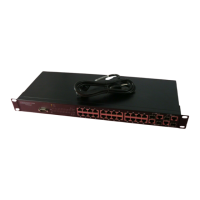
